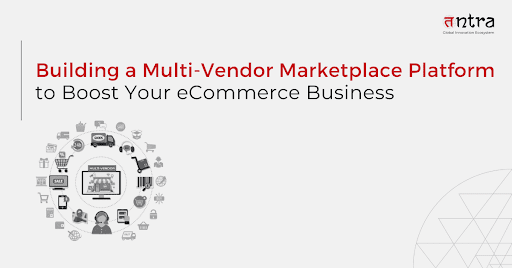
Multi Vendor Marketplace Solution: Boost Your Online Sales
Table of Contents
ToggleThis blog delves into the dynamic multi-vendor marketplace landscape, spotlighting the evolution of multi-vendor platforms. It explores strategies for successful platforms, detailing the mechanics of multi-vendor marketplaces and guidelines for developing one. Emphasizing business model determination, platform selection, vendor empowerment, and user-centric design, it underscores the importance of meticulous planning and continual enhancements to create thriving online marketplaces meeting evolving consumer demands.
1000Farmacie is a prominent player in the Italian e-pharmacy market, offering a diverse array of health and wellness products through its innovative multi vendor marketplace solution. By seamlessly uniting pharmacies, parapharmacies, and various partners, the platform ensures a comprehensive selection of goods accessible to customers throughout Italy.
Through their intuitive online pharmacy app, 1000Farmacie extends convenience by enabling purchasing parapharmaceutical items with doorstep delivery. Their commitment to exceptional customer service is evident from the outset, offering consultations via chat or phone and ensuring accurate information and guidance on medications and parapharmaceuticals.
This marketplace solution thrives on a network of over sixty pharmacies and devoted partners, entrusting their products to 1000Farmacie for seamless shipping across Italy. Upholding a steadfast dedication to enhancing clients’ health and well-being, the platform continues to set new standards in user-friendly design and technological advancements, consistently elevating the standards of online health and wellness solutions.
Source: Tntra
Evolving Landscape of the eCommerce Marketplace
The Multi-Vendor Support Services Market is expected to grow from USD 56.33 billion in 2023 to over USD 70.37 billion by 2028, according to projections. This figure indicates a projected compound annual growth rate (CAGR) of 4.55% for the years 2023 to 2028.
In 2021, Statista anticipated that worldwide retail eCommerce sales would exceed USD 4.9 trillion. According to projections from the same source, sales are expected to reach USD 7.4 trillion by 2025.
The global proliferation of low-cost internet access is fueling the growth of multi store platform eCommerce, which is being assisted by the increasing use of smartphones and tablets. From a base of USD 148 billion in 2018, the trajectory predicts a substantial increase in smartphone retail eCommerce sales, which are expected to approach USD 432 billion in 2022.
Between 2018 and 2019, the value of cashless transactions worldwide increased by 14% to USD 708.5 billion. With the continued growth of eCommerce and the increasing acceptance of alternative payment methods, non-cash payments are expected to reach an estimated 1.1 trillion by 2023.
An estimated USD 2 billion in investments are anticipated in the logistics and warehousing industry. Thanks to this investment, online sellers will be able to reach a wider audience and efficiently transport goods even to remote locations.
Additionally, the popularity of BNPL (Buy Now, Pay Later) and similar payment options is a major factor in customers’ willingness to accept new payment and shopping methods.
Key Strategies for Successful Multi Vendor Platforms
A multi-vendor marketplace is an online marketplace platform that is a central location for different sellers to exhibit and offer their goods to the target market. Unlike a single-vendor arrangement, this large marketplace supports several merchants, increasing the range of products and clientele.
In an eCommerce platform with multiple vendors, every vendor manages an inventory and orders through a seller account, paying a commission to the platform owner. These eCommerce marketplaces, in turn, help vendors connect with a specific clientele, which promotes prospects for sales growth.
Understanding the Mechanisms Behind an Online Marketplace Platform with Multiple Vendors
The multi-vendor marketplace aggregates various vendors offering a single product, enabling customers to choose and place orders. Once ordered, the seller fulfills requirements and manages shipping. Both vendors and customers track and receive notifications on order status. Vendors utilize the platform to list products and engage with customers separately from regular users.
- Vendors undergo thorough authentication to register on the multi vendor eCommerce marketplace.
- They list products and oversee dashboard management.
- Upon order reception, vendors handle payment processing and order shipment.
- Marketplace owners retain a small portion of the payment as a commission.
Crafting a Multi-Vendor Marketplace: Building Your Own Platform for Marketplace Development
A multi vendor marketplace is a potent tool in the digital age for bringing buyers and sellers together on a single online platform. If you’re keen to start this exciting new industry, investigate the procedures for building a multi-vendor ecommerce marketplace website.
If you’re eager to dive into this fast-paced world, let’s examine how to create a website for a multi-vendor ecosystem.
1. Determine Your Business Model and Area of Specialization
Choose the industry or niche you want to start with—think about products, clothing, or technology. Next, decide on your business plan: will you charge a listing fee, a commission, or a membership fee to vendors?
2. Select an Appropriate Platform
Your development platform should meet your needs and align with your unique specifications. Among the prevailing options boasting multi-vendor capabilities, prominent choices include WooCommerce, Shopify, and Magento. These platforms provide flexible functions that accommodate many business strategies and enable the establishment of solid multi-vendor markets. An experienced multi-vendor application development team can help you make the right selection.
3. Establish Vendor Accounts
Give merchants more authority by enabling them to create customized accounts and unique profiles. To streamline their operations, offer a full dashboard that gives them control over product listings, easy payment processing, and effective order oversight.
4. Design and Customization
Choose a visually appealing theme that captures the spirit of your marketplace. Make it your own to highlight your distinctive logo and guarantee a flawless user experience.
5. Payment Handling and Commission Structure
Put in place a reliable and effective payment processing system. Decide on a plan for getting vendor commissions when sales are made successfully. Integrate reliable payment gateways like PayPal, Stripe, and others. Partnering with a trustworthy software product engineering company can help with payment system integration.
6. Product Listing
Allow vendors to present their goods with thorough descriptions, detailed photos, and estimated costs. Create a review process to increase transparency and promote trustworthiness with the consumers.
7. Security and Confidentiality
With simple navigation, robust search capabilities, and a mobile-friendly design, a digital marketplace solution team specializing in eCommerce app development guarantees a flawless browsing experience.
8. Enhancing User Experience
With simple navigation, robust search capabilities, and a mobile-friendly design, marketplace development teams specializing in eCommerce app development guarantee a flawless browsing experience.
9. Launch and Oversight
Before the official launch, the eCommerce solutions developers test the platform for glitches or malfunctions. Once it’s deemed ready, the eCommerce development teams initiate the launch of the multi-vendor marketplace platform and meticulously monitor its performance and usage data.
10. Continuous Enhancements
Effective online marketplace development teams always consider customer feedback while making the required adjustments. Updating and improving your platform frequently in response to user preferences, new trends, and technology developments is recommended.
These modifications are designed to emphasize the integration of marketplace solutions, digital marketplace elements, multi-vendor eCommerce platform features, marketplace development aspects, and payment processing considerations.
Conclusion
In the dynamic eCommerce landscape, the anticipated surge in the Multi Vendor Support Services Market underscores significant opportunities, fueled by escalating retail eCommerce revenues and the rapid surge in smartphone-initiated transactions. Embracing cashless payments and substantial investments in logistics pave the way for broader market reach.
The establishment of a multi-vendor marketplace necessitates thorough planning, the use of appropriate platforms, and ongoing adaptation to changing consumer demands and technological developments. Working with software product engineering companies can help create marketplace platforms that result in significant growth for businesses.
Tntra is an experienced customizable marketplace platform developer. Contact team Tntra for more information today!!





